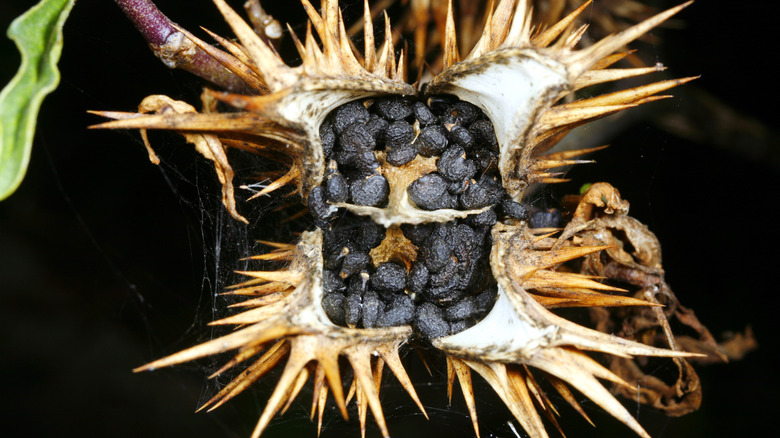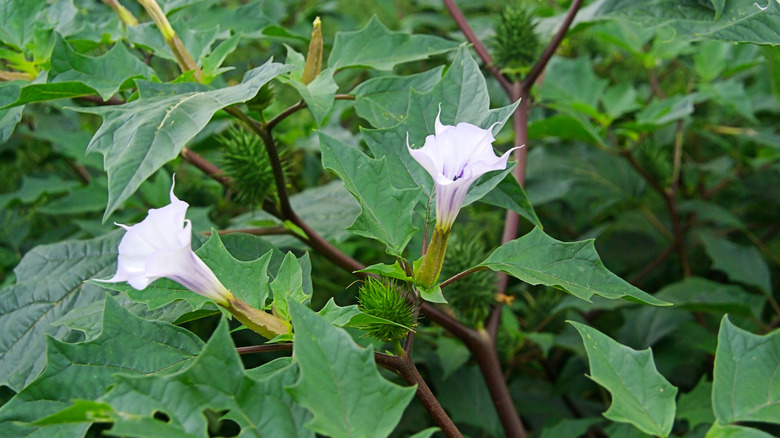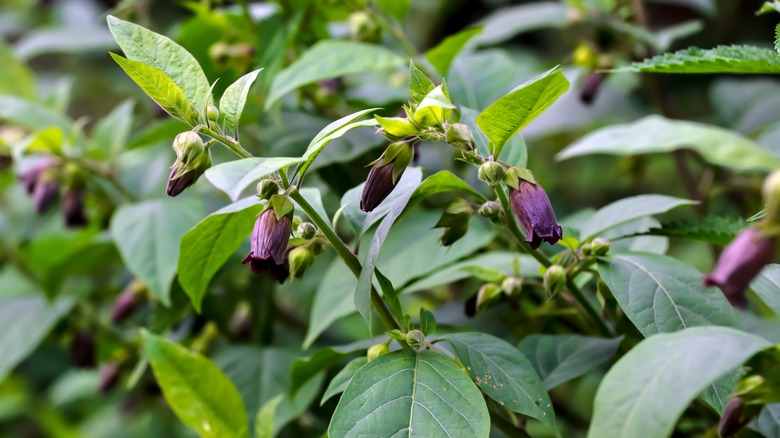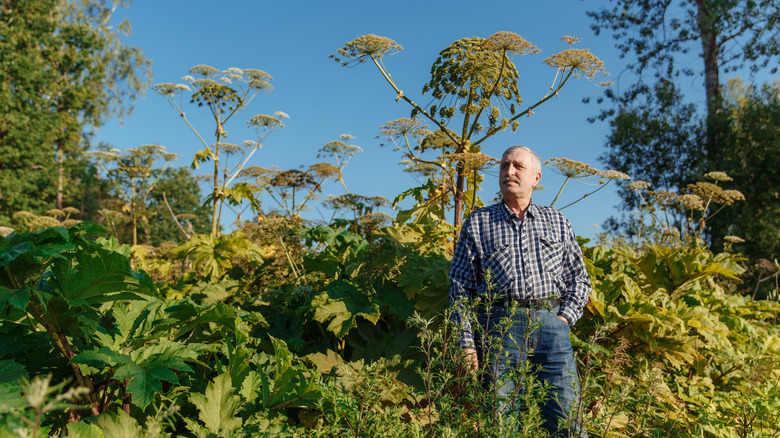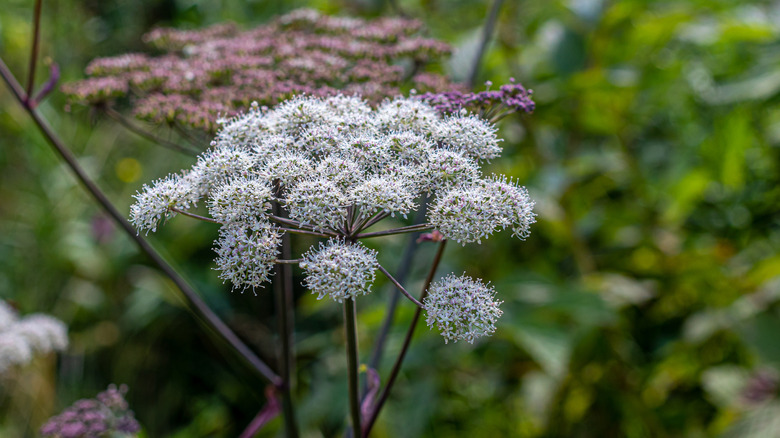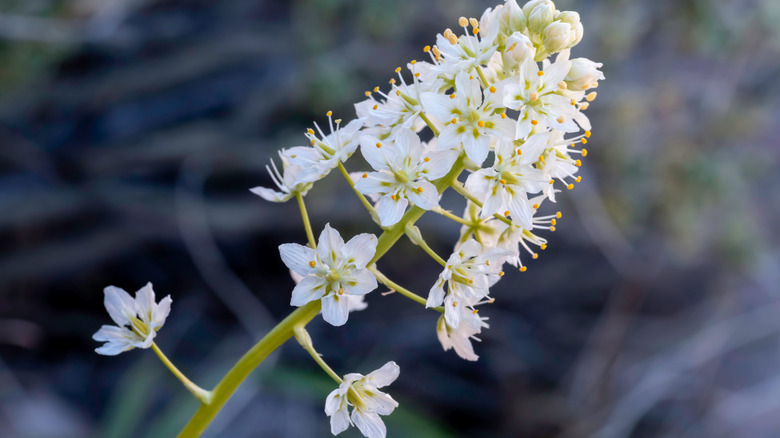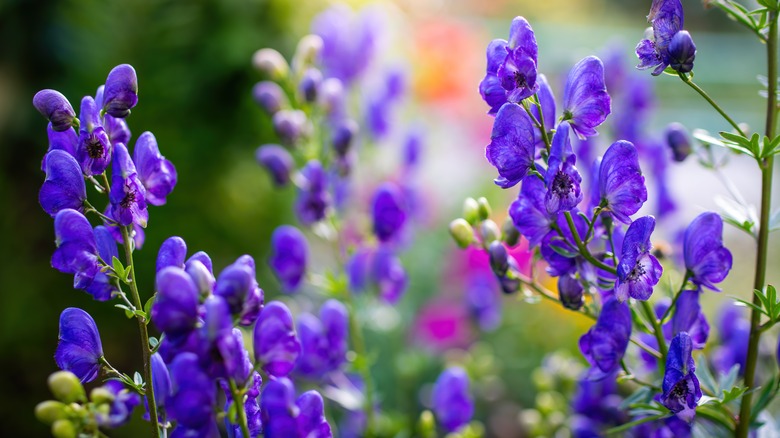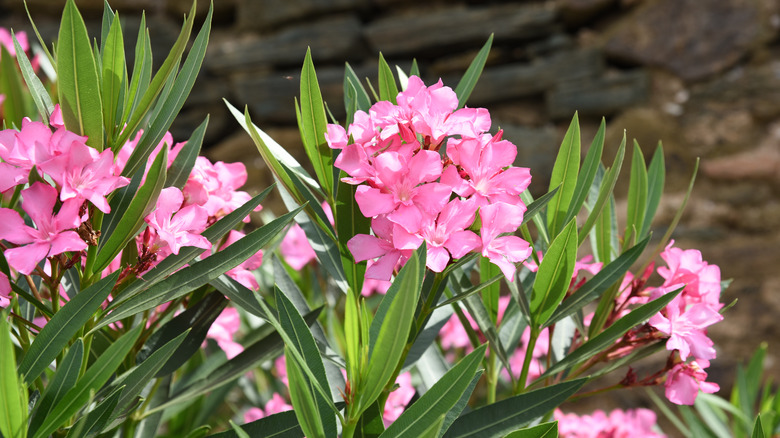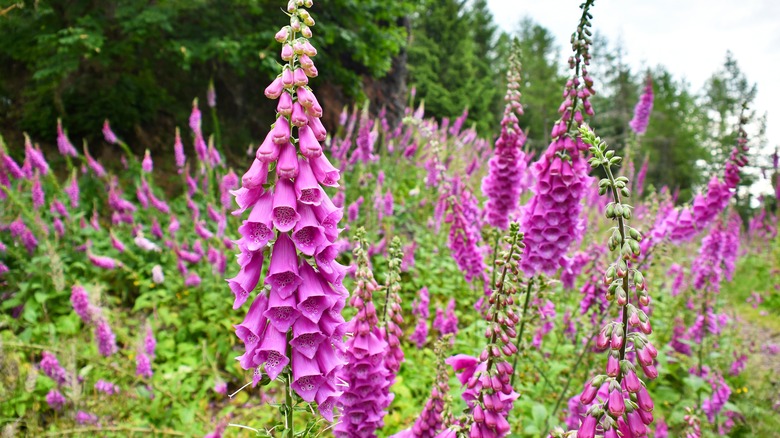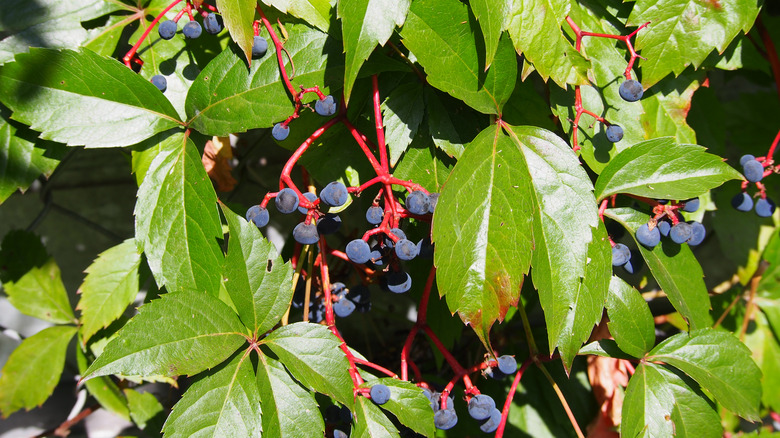11 Scary Weeds In Your Yard To Destroy Right Away
As much as you cultivate your garden, plants you haven't placed in it will still poke through. It's sometimes a wonderful thing, such as when a snapdragon you didn't plant decides to pop up next to where you had a flower box last year. Fans of dandelions rave about adding the leaves to salads, or as A Nest with a Yard suggests, nibbling on the flowers or trying some dandelion wine. And wild violets naturalizing in a shady spot of your lawn can be a beautiful, albeit invasive, weed, but House Digest will tell you that it is one of the weeds worth growing in place of grass. That being said, we recommend planting horned violets (Viola cornuta) if you choose to do it intentionally.
But before you get excited about the possibility of crossing weeding off your to-do list, not every one is worth keeping. In fact, some are downright dangerous and even deadly. Just ask Socrates, who likely met his death ingesting one of the world's most deadly plants, hemlock (via Britannica). The plant world contains many scary weeds and many have been used throughout history as intentional poisons. Others have used their poisonous defenses against humans in purely accidental, non-nefarious ways, but the outcome still ranges from unpleasant to lethal. Take precautions if any of these 11 scary weeds decide to take up residence in your yard and destroy them right away.
1. Jimson weed
With its purple tubular flowers and green oak-like leaves, young jimson weed (Datura stramonium) looks innocuous, but all parts of the plant, particularly the seeds inside the spiky pod, are poisonous, according to Brooklyn Botanic Garden. Jimson weed (sometimes written as jimsonweed) is also known as thorn apple or devil's trumpet.
2. Belladonna
Atropa belladonna — or deadly nightshade — lives up to its name. Beautiful bell-shaped flowers give way to sweet blackberries, says the United States Forest Service, but they warn that the fruits are highly toxic. A related plant, bittersweet nightshade (Solanum dulcamara), is considered to be invasive and mildly poisonous, according to the North Carolina Extension Cooperative.
3. Giant hogweed
Aptly named, the giant hogweed is a monster of a weed. Growing up to 15 feet tall, the weed is highly toxic, causing rashes, skin irritation, and inflammation when touched. The National Capital Poison Center urges people not to try to remove giant hogweed themselves, but to contact their local or state agriculture extension service.
4. Water hemlock
When the USDA Agricultural Research Service refers to a weed as the "most violently toxic plant that grows in North America," stay away! Water hemlock (Cicuta douglasii) is a member of the carrot family, with roots smelling strongly of carrot, but unlike their edible orange cousins, the wetland weeds contain dangerous poisons.
5. Pokeweed
Flourishing in the eastern half of the United States, pokeweed (Phytolacca americana) has a long history with Native Americans and is popular with wildlife, but it's also poisonous, especially the roots and unripe berries. Grow It Build It notes that it can grow to 10 feet tall.
6. Meadow deathcamas
Growing from a bulb like an onion and near where wild onions thrive, meadow deathcamas (Zygadenus venenosus) are not something to chop up and add to a recipe. Luckily, they don't have an onion scent. All parts are toxic, according to the blog A Wandering Botanist, including the pollen and nectar.
7. Monkshood
Whether grown wild or purposefully for its blue-purple color, monkshood (Aconitum napellus, also known as wolfsbane) is cloaked in poison. The American Association for Clinical Chemistry notes that picking less than 20 leaves can cause a cardiac reaction. The tall wildflower has been used to poison arrow tips.
8. Oleander
Native to the Mediterranean, but grown around the world as an ornamental shrub, oleander (Nerium oleander) has fragrant, showy flowers, but every part of the evergreen is toxic. The Medieval Garden Enclosed blog for the Metropolitan Museum says that just using its branches as spears for cooking meat can be deadly.
9. Foxglove
Popular in cottage gardens, foxglove (Digitalis purpurea) is a pretty flower, but Horticulture magazine calls it an "escaped ornamental plant" that is now popping up where gardeners haven't planted it. Every part of the plant is poisonous, causing heart irregularities, especially the leaves near the top of the flower.
10. Virginia creeper
Vines can be a pleasing landscape addition, but Virginia creeper (Parthenocissus quinquefolia) isn't likely to be the one you want to add to your garden. It can completely take over a garden, according to a master gardener at the University of California.
